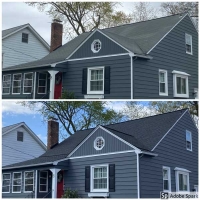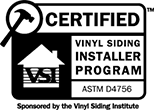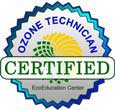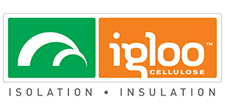When discussing home improvements and energy-saving solutions, you might wonder about ENERGY STAR® certification for windows. As a homeowner, it’s essential to understand what makes a window ENERGY STAR certified to enhance your home’s energy efficiency. Continue reading as Acorn Home Improvements, Inc. explains what you need to know.

About ENERGY STAR Certification
The ENERGY STAR program, a joint effort by the U.S. Environmental Protection Agency (EPA) and the Department of Energy, promotes energy-efficient products and practices to save money and protect the environment. For a window to earn ENERGY STAR certification, it must meet the stringent energy efficiency guidelines set by the EPA. These guidelines, established by the National Fenestration Rating Council (NFRC), ensure that every certified window, door or skylight provides substantial energy savings across diverse climates.
Performance Standards
Performance criteria are central to a window’s ENERGY STAR certification. This includes evaluating how well a window keeps heat inside during the winter or outside during the summer, essentially acting as a barrier against unwanted heat transfer. Various factors influence these criteria, such as U-factor and solar heat gain coefficient (SHGC), which measures how much solar radiation penetrates the window. The requirements vary across different U.S. climate zones, ensuring that a certified window provides optimal performance for its specific environmental conditions.
Climate-Based Certification
Choosing the right ENERGY STAR-certified windows can significantly impact your home’s comfort and energy consumption. The program divides the country into several climate zones, each with tailored performance criteria to address local weather conditions effectively. These zones guide homeowners in selecting windows that best suit their environment, ensuring maximum energy savings.
Common Product Features in Certified Windows
While ENERGY STAR certification does not mandate specific technologies, certified windows often share common features aimed at enhancing energy efficiency. These include:
- Multiple panes – Double or triple-pane windows that offer improved insulation compared to single-pane alternatives.
- Gas fills – Spaces between panes filled with inert gases like argon or krypton to reduce heat transfer.
- Low-E coatings – Specialized coatings that reflect infrared light, keeping heat inside in winter and outside in summer, without significantly affecting the window’s ability to let in natural light.
- Quality framing materials – Frames are crucial in a window’s overall thermal performance. Materials like fiberglass, vinyl, wood or composites offer superior insulation and durability.
Upgrade your home with ENERGY STAR-certified windows from Acorn Home Improvements, Inc. Enjoy substantial energy savings and a more comfortable, environmentally friendly home. Reach out to us at (973) 386-9604 or complete our contact form to book a service and make a sustainable decision for your home.























